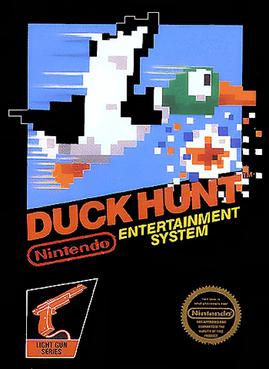
Duck Hunt is a 1984 light gun shooter video game developed and published by Nintendo for the Nintendo Entertainment System (NES) video game console and the Nintendo VS. System arcade hardware. The game was first released in April 1984, in Japan for the Family Computer (Famicom) console and in North America as an arcade game. It became a launch game for the NES in North America in October 1985, and was re-released in Europe two years later.

Donkey Kong 3 is a shooter video game developed and published by Nintendo. It is the third installment in the Donkey Kong series and it was released for arcades worldwide in 1983, the Family Computer in 1984, then in North America for the Nintendo Entertainment System in 1986. The gameplay departs from previous Donkey Kong games, and it stars an exterminator named Stanley instead of Mario.

Shinobi (忍) is a side-scrolling hack and slash video game produced by Sega, originally released for arcades on the Sega System 16 board in 1987. The player controls ninja Joe Musashi, to stop the Zeed terrorist organization from kidnapping students of his clan.

Ice Climber is a platform game developed and published by Nintendo. It was released in 1985 for both the arcade VS. System and the Famicom / Nintendo Entertainment System console. The characters Popo and Nana, collectively known as the Ice Climbers, scale 32 vertically scrolling, ice-covered mountains to recover stolen vegetables from a giant condor. In some European countries, Ice Climber was bundled with the Nintendo Entertainment System.
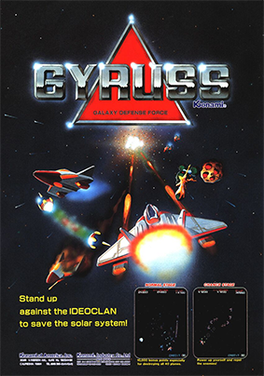
Gyruss is shoot 'em up arcade video game designed by Yoshiki Okamoto and released by Konami in 1983. Gyruss was initially licensed to Centuri in the United States for dedicated machines, before Konami released their own self-distributed conversion kits for the game. Parker Brothers released contemporary ports for home systems. An enhanced version for the Family Computer Disk System was released in 1988, which was released to the North American Nintendo Entertainment System in early 1989.

Hogan's Alley is a light gun shooter video game developed and published by Nintendo. It was released for the Family Computer in 1984 and then the arcade Nintendo VS. System and Nintendo Entertainment System in 1985. It was one of the first hit video games to use a light gun as an input device, along with Nintendo's Duck Hunt (1984). The game presents players with "cardboard cut-outs" of gangsters and innocent civilians. The player must shoot the gangs and spare the innocent people. It was a major arcade hit in the United States and Europe.

Narc is a 1988 run and gun arcade game designed by Eugene Jarvis for Williams Electronics and programmed by George Petro, Todd Allen, and Eugene Jarvis, with art by Jack Haeger, John Newcomer, and Lin Young. It was one of the first ultra-violent video games and a frequent target of parental criticism of the video game industry. The object is to arrest and kill drug offenders, confiscate their money and drugs, and defeat "Mr. Big". It was the first game in the newly restarted Williams Electronics coin-op video game division. Shortly before its release, Williams acquired the video and pinball divisions of Bally/Midway.

Bump 'n' Jump is an overhead-view vehicular combat game developed by Data East and originally released in Japan as Burnin' Rubber. Distributed in North America by Bally Midway, the arcade version was available as both a dedicated board and as part of Data East's DECO Cassette System. The goal is to drive to the end of a course while knocking enemy vehicles into the sides of the track and jumping over large obstacles such as bodies of water.

Carnival is a fixed shooter developed by Gremlin and released by Sega in arcades in 1980. It was one of the first video games with a bonus round.
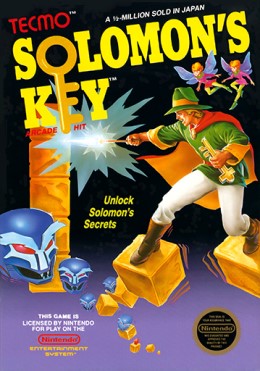
Solomon's Key is a puzzle game developed by Tecmo in 1986 for an arcade release on custom hardware based on the Z80 chipset. It was ported to multiple systems including the Nintendo Entertainment System and Commodore 64. The PC Engine version was known as Zipang and the Game Boy version as Solomon's Club. A prequel, Solomon's Key 2, was released in 1992 for the NES. The game was also ported to Virtual Console for the Nintendo 3DS and Wii U in 2006 and later to Nintendo Switch Online in 2018.
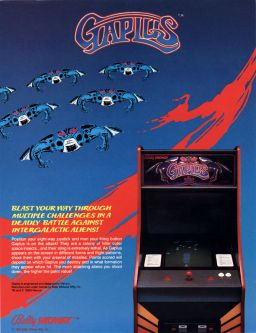
Gaplus is a 1984 fixed shooter arcade game developed and released by Namco. It is the third game in the Galaxian series, serving as a direct sequel to Galaga (1981). In North America, a modification kit was later released to change the name to Galaga 3, possibly to reflect its position in the series. It was the only game other than Phozon to run on the Namco Phozon hardware. A contemporary home port for the Commodore 64 was released in 1988. A "demastered" version of the game was included in Namco Museum Archives Vol. 2 as a bonus title.

SonSon is an arcade video game by Capcom released in July 1984. It is loosely based on the Chinese novel Journey to the West. The player assumes the role of a monkey boy and fights their way from one side to another, eventually reaching the statue of Buddha. One battles bats, rats, and mad bombers along the way with his fighting rod that shoots balls of fire.
Gradius is a series of shooter video games, introduced in 1985, developed and published by Konami for a variety of portable, console and arcade platforms. In many games in the series, the player controls a ship known as the Vic Viper.
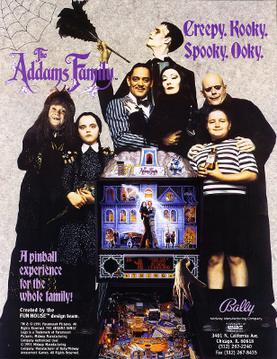
The Addams Family is a pinball machine released in March 1992. It was designed by Pat Lawlor and Larry DeMar and released by Midway. It was based on the 1991 film of the same name, and features custom speech by the stars of the film, Anjelica Huston and Raul Julia. It is the best-selling solid state pinball machine of all time with 20,270 units sold.
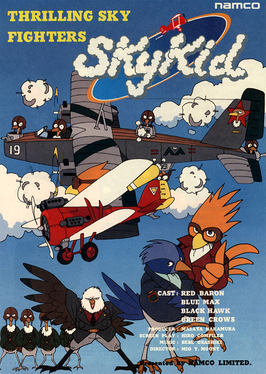
Sky Kid is a horizontally scrolling shooter arcade video game released by Namco in 1985. It runs on Namco Pac-Land hardware but with a video system like that used in Dragon Buster. It is also the first game from Namco to allow two players to play simultaneously. The game was later released on the Famicom, and both this version for the Wii, Nintendo 3DS, and Wii U and the original arcade version for the Wii were later released on Nintendo's Virtual Console service, and for the Nintendo Switch and PlayStation 4 as part of Hamster's Arcade Archives line of digital releases. The NES version was also ported to arcades for the Nintendo VS. System as VS. Super Sky Kid, but promotional materials and the cabinet for this version just use the name VS. Sky Kid.

Section Z is a horizontally scrolling shooter by Capcom, released as an arcade video game in 1985. A home version was published for the Nintendo Entertainment System in 1987.
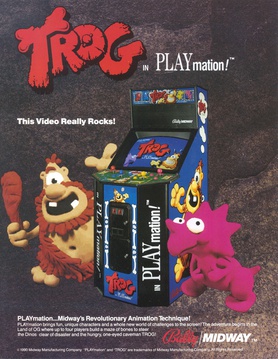
Trog is a maze arcade video game developed and published by Midway Manufacturing in 1990 in North America under the "Bally/Midway" label and later by Williams Electronics in Europe. In the game, players control one of four dinosaurs chased by the titular cavemen. Its gameplay includes elements of Pac-Man—collect all items in a maze, eat a special item to turn the tables on pursuers—but supports up to four players at once. Initially envisioned as a hybrid puzzle/strategy project, its original concept was later reworked into a Pac-Man-like title after poor reception from testers and features claymation graphics, advertised as "Playmation" by Midway. Conversions for the Nintendo Entertainment System and MS-DOS were released by Acclaim Entertainment in 1990 and 1991 respectively, reducing the number of simultaneous players to two. Both the arcade and NES versions garnered positive reception from critics.

The Super Spy is an early Neo Geo game released by SNK in 1990. It is a first-person shooter and beat 'em up game with action role-playing elements in which players move through the many floors of an office building shooting terrorists. It is a first-person game where the player character's arms and weapons are visible on screen. In 1991, ADK's Crossed Swords had similar gameplay, but with more role-playing elements and hack & slash combat instead of shooting and fist-fighting.

Gunblade NY is a light gun rail shooter developed by Sega for the Model 2 arcade machine and was released in 1995 in North America and 1996 in Japan. The game was re-released alongside its sequel, L.A. Machineguns: Rage of the Machines for the Wii in 2010 as part of the Sega Arcade Hits Pack.
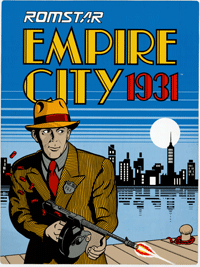
Empire City: 1931 is a shooter game developed by Seibu Kaihatsu that was originally released into arcades in 1986, by Taito in Japan and Europe and by Romstar in North America. The game has players taking on the mafia in 1931 New York City by gunning down mobsters one by one.



















